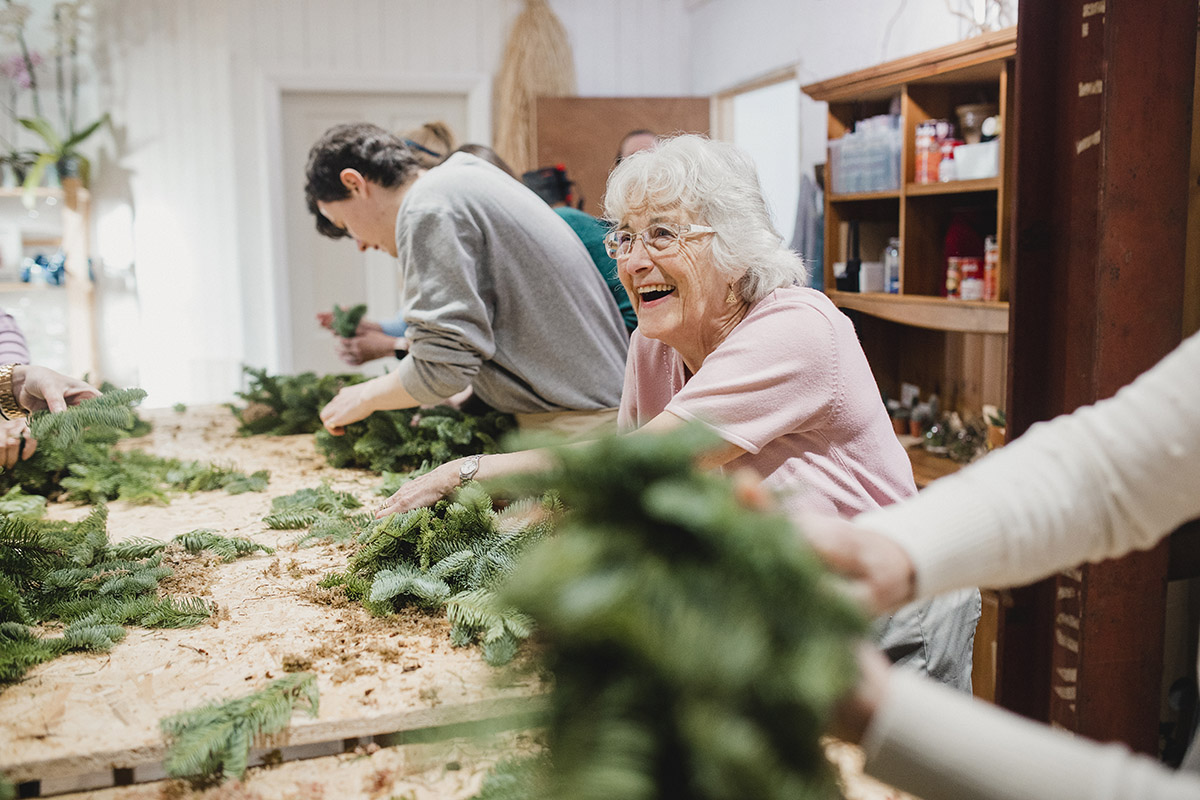A Pollinator Garden at Grace Ridge Retirement Community

How a Retirement Community Built a Pollinator Garden
It’s no secret that pollinators are in decline. Loss of habitat, invasive pests, pesticides, and climate change are all contributing to a decrease in the population of pollinators — the bees, butterflies, moths, flies, bats and birds that are essential to the reproduction of many plants. But residents at Grace Ridge have decided to do something about it. They’ve planted a pollinator garden, creating a habitat in which pollinators can rest and refuel as they go about their business of maintaining ecosystems and assisting with the production of food and flowers.
The Seed of an Idea
Noticing an unused patch of ground on the Grace Ridge campus, resident Carol Hamilton floated the idea of turning it into a garden to support monarch butterflies and other pollinators. With the backing of the Grace Ridge administration and the help of other residents, Hamilton researched the project, amended the soil, and started planting pollinator-friendly flowers in the spring of 2019. The result is a lovely garden oasis for humans and pollinators alike. Now registered as a “Pollinator Pitstop” with the North Carolina Wildlife Federation and a “Monarch Waystation” with Monarch Watch, the garden has inspired residents to expand their efforts. Residents Lee and Buddy Helton used their previous experience raising monarch butterflies to coordinate a project in which residents could foster a monarch chrysalis, releasing the butterfly into the garden once it emerged.
Start Your Own Garden for Pollinators
If you’re feeling inspired by the residents of Grace Ridge, maybe it’s time to plant your own pollinator garden. You’ll be creating a habitat for native bees and contributing to a pollinator pathway that offers forage and habitat to pollinators navigating through an urban environment. Before you get out your shovel and start digging, here are some tips to help you choose the right plants.
- Use native plants. Colorful annuals like zinnias will attract pollinators (and draw admiring glances from passersby) but native plants — while not always as showy as annuals — can be key in supporting the entire lifecycle of pollinators, offering places to shelter or food for caterpillars which have often co-evolved to feed on only specific native plants.
- Don’t forget the native grasses. When you think of gardens, you probably think of the bright beauty of flowering plants. But native grasses can be host plants for the larva of many native butterflies and moths — plus they’re drought-tolerant, have low nutrient requirements, and help stabilize the soil.
- Include milkweed. If you’re a fan of the monarch butterfly — now listed as an endangered species — you’ll want to make room for milkweed in your garden. Female monarchs lay their eggs exclusively on milkweed because it’s the only food source for monarch larvae. It’s also popular with over 450 other insects.
Join the Buzz at Grace Ridge Senior Living in Morganton, NC.
If you like the idea of a retirement community in Morganton, NC. that helps pollinators, check out Grace Ridge for yourself. You can get involved in our pollinator garden resident committee or any of our many other resident committees and interest groups — or start your own! From our gardens to scenic drives along the Blue Ridge Parkway, and hiking and biking along the Catawba River Greenway Trail, there are myriad opportunities for nature lovers to enjoy the great outdoors here. Contact us to find out more or to schedule a visit.



-852.jpg)

-8.jpg)
